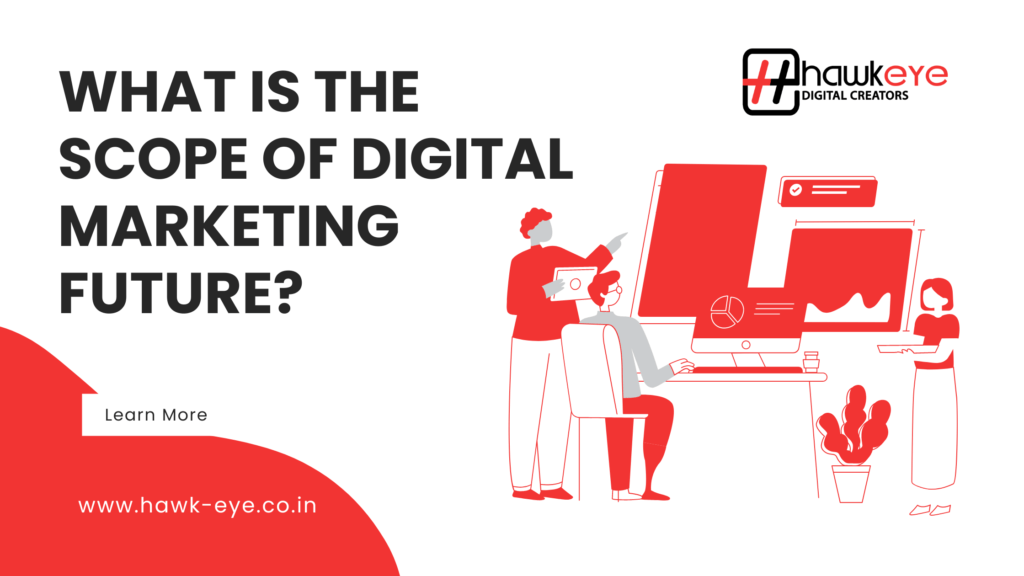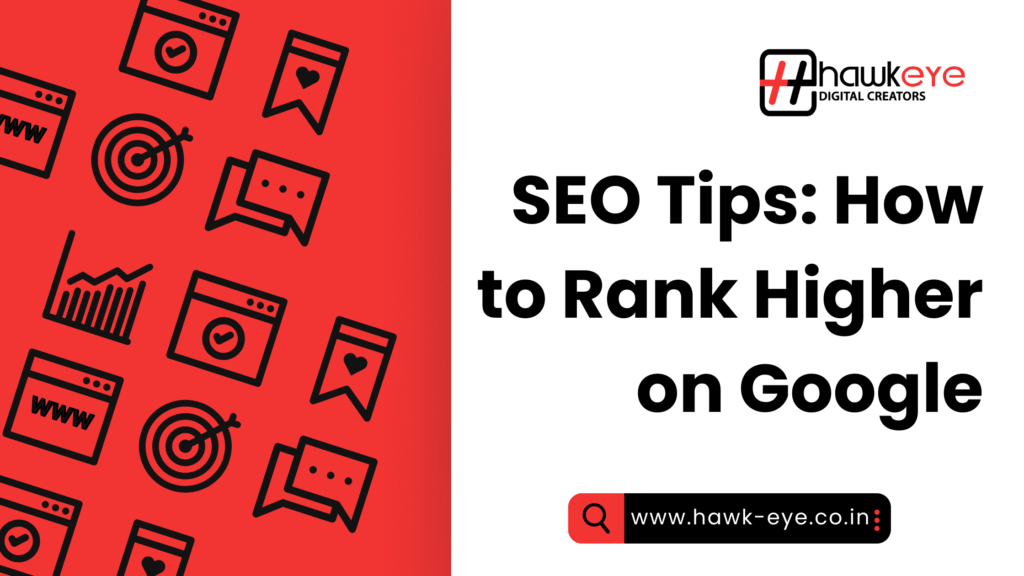7 Common SEO Myths You Should Ignore – Best Guide by Hawkeye Digital Creators
Search Engine Optimization (SEO) has come a long way. With every algorithm update and the rise of AI-driven platforms like ChatGPT and Google’s AI Overviews, the landscape of SEO is constantly evolving. Yet, many marketers and business owners still fall prey to outdated beliefs that hurt their digital growth.
At Hawkeye Digital Creators, we believe in staying ahead of the curve. In this blog, we’ll debunk the 7 most common SEO myths circulating in 2025–2026 and guide you toward smarter, data-driven strategies.
1. SEO Is a One-Time Task

Myth: You can “do SEO once” and expect to rank forever.
Reality: SEO is a continuous process.
Search engines like Google update their algorithms thousands of times each year. From new ranking factors to shifts in user behavior, SEO is never static. A strategy that worked in 2022 may become obsolete in 2025.
You need regular content updates, technical SEO audits, competitor analysis, and user experience optimization. At Hawkeye Digital Creators, we provide monthly SEO check-ins and quarterly strategy overhauls to keep your digital presence sharp and competitive.
Pro Tip: Use tools like SEMrush or Ahrefs to monitor ranking drops and optimize accordingly every 30–60 days.
2. More Keywords = Better Rankings
Myth: Stuffing a page with keywords improves ranking.
Reality: Google penalizes keyword stuffing.

SEO in 2025 is about semantic search and natural language processing (NLP). Google now understands user intent, synonyms, and content depth. So simply repeating “best digital marketing company” 20 times won’t cut it.
Instead, focus on:
- Using LSI (Latent Semantic Indexing) keywords
- Writing conversational and helpful content
- Optimizing for topic clusters, not just keywords
At Hawkeye Digital Creators, we create intent-driven content that aligns with how people search—especially with voice and AI search tools becoming mainstream.
Quality content + contextually placed keywords = SEO gold in 2025–2026.
3. Social Media Directly Affects SEO Rankings

Myth: More likes and shares directly improve your Google ranking.
Reality: Social signals don’t directly impact SEO, but they help indirectly.
Google has confirmed that while social engagement isn’t a ranking factor, social media can:
- Drive traffic to your website
- Help earn backlinks when content is shared widely
- Boost brand visibility and authority
At Hawkeye Digital Creators, we integrate social and SEO by:
- Promoting high-quality blog posts across platforms
- Encouraging shareable content formats (e.g., infographics, carousels)
- Collaborating with influencers to amplify reach
The indirect benefits of social media are too powerful to ignore.
Use social media to support SEO, not replace it.
4. SEO Results Are Instant

Myth: You’ll rank on the first page within a week or two.
Reality: SEO takes time, patience, and consistency.
Depending on your industry and competition, SEO results typically take:
- 3–6 months for low-competition keywords
- 6–12 months for medium/high-competition keywords
Google needs time to crawl, index, and evaluate the quality of your site. Unlike paid ads, SEO builds long-term equity.
At Hawkeye Digital Creators, we set realistic timelines with milestones like:
- Traffic improvement in Month 2
- Keyword movement by Month 3
- Conversions and leads by Month 4+
We believe in transparency and educating clients to understand the value of patience.
SEO is a long game with compounding results.
5. Meta Tags Don’t Matter

Myth: Meta titles and descriptions have no SEO value.
Reality: Meta tags influence click-through rate (CTR), which indirectly boosts SEO.
While Google may not use meta descriptions as a ranking factor, a compelling title and description:
- Increase visibility in search results
- Drive more clicks (CTR = behavioral signal)
- Set user expectations for on-page content
Title tags, on the other hand, are still a direct ranking factor.
At Hawkeye Digital Creators, we:
- Write SEO-optimized titles with power words and target keywords
- A/B test descriptions to see what drives more clicks
- Tailor tags to match searcher intent
Think of meta tags as your first impression on Google users.
6. All Backlinks Are Good Backlinks

Myth: Any backlink helps SEO, no matter the source.
Reality: Low-quality or spammy backlinks can harm your site.
Google’s algorithm values quality over quantity. A few high-authority links (from niche-relevant websites) are better than hundreds from directories or spam blogs.
Types of harmful links include:
- Paid or sponsored links with no disclosure
- Irrelevant blog comments and forums
- Link farms or PBNs (Private Blog Networks)
We at Hawkeye Digital Creators use white-hat techniques to build strong backlink profiles:
- Guest posting on industry blogs
- Outreach to journalists and bloggers
- Creating content that attracts natural links (data studies, tools, infographics)
Audit your backlink profile every quarter to disavow toxic links.
7. AI-Generated Content Eliminates the Need for SEO

Myth: ChatGPT and AI tools have replaced SEO.
Reality: AI is a tool, not a strategy. SEO is still essential.
Yes, AI can help generate content, but that content still needs:
- Optimization for search engines
- Internal linking
- User intent alignment
- Schema markup
- Technical SEO support
Search engines like Google are using AI in Search Generative Experience (SGE), which presents zero-click answers. To succeed in this era, content must be structured for AI and search engines. That means:
- Writing in Q&A format
- Adding FAQs with schema
- Using headings and bullet points for readability
At Hawkeye Digital Creators, we specialize in AEO (Answer Engine Optimization) and GEO (Generative Engine Optimization)—blending traditional SEO with AI-readability.
AI can create content, but SEO makes it discoverable.
Bonus: Emerging SEO Trends for 2026
Stay ahead by preparing for the following SEO trends:
1. AEO & Zero-Click Search
Answer Engine Optimization (AEO) focuses on helping your content appear in AI-generated answers or voice search results.
- Use conversational language
- Optimize for “People Also Ask”
- Add FAQ sections with schema markup
2. Video & Visual Search SEO
Visual search is rising (think Google Lens). In 2026, optimizing images and videos with alt text, captions, and sitemaps is a must.
3. Search Intent > Keywords
Tools like ChatGPT and Perplexity AI are changing how people search. Tailoring your content to match transactional, informational, and navigational intent is crucial.
4. Mobile UX and Core Web Vitals
Google will continue to reward websites that:
- Load in under 2.5 seconds
- Are mobile-first
- Offer smooth interactivity and visual stability
At Hawkeye Digital Creators, we’re already helping clients prepare for these shifts through AI-assisted content strategies, mobile-first design, and predictive SEO analytics.
Conclusion: Common SEO Myths
Let’s recap the 7 common SEO myths to leave behind in 2025–2026:
- SEO is not a one-time task
- Keyword stuffing doesn’t work
- Social media doesn’t directly boost SEO
- SEO takes time, not days
- Meta tags still matter
- Not all backlinks are good
- AI is helpful but doesn’t replace SEO
To thrive in the modern digital ecosystem, you need an SEO strategy that’s adaptive, AI-aware, and human-focused.
At Hawkeye Digital Creators, we offer tailored SEO and digital marketing services that deliver measurable results. Whether you’re a startup or an established business, we can help you debunk myths and build real growth.





